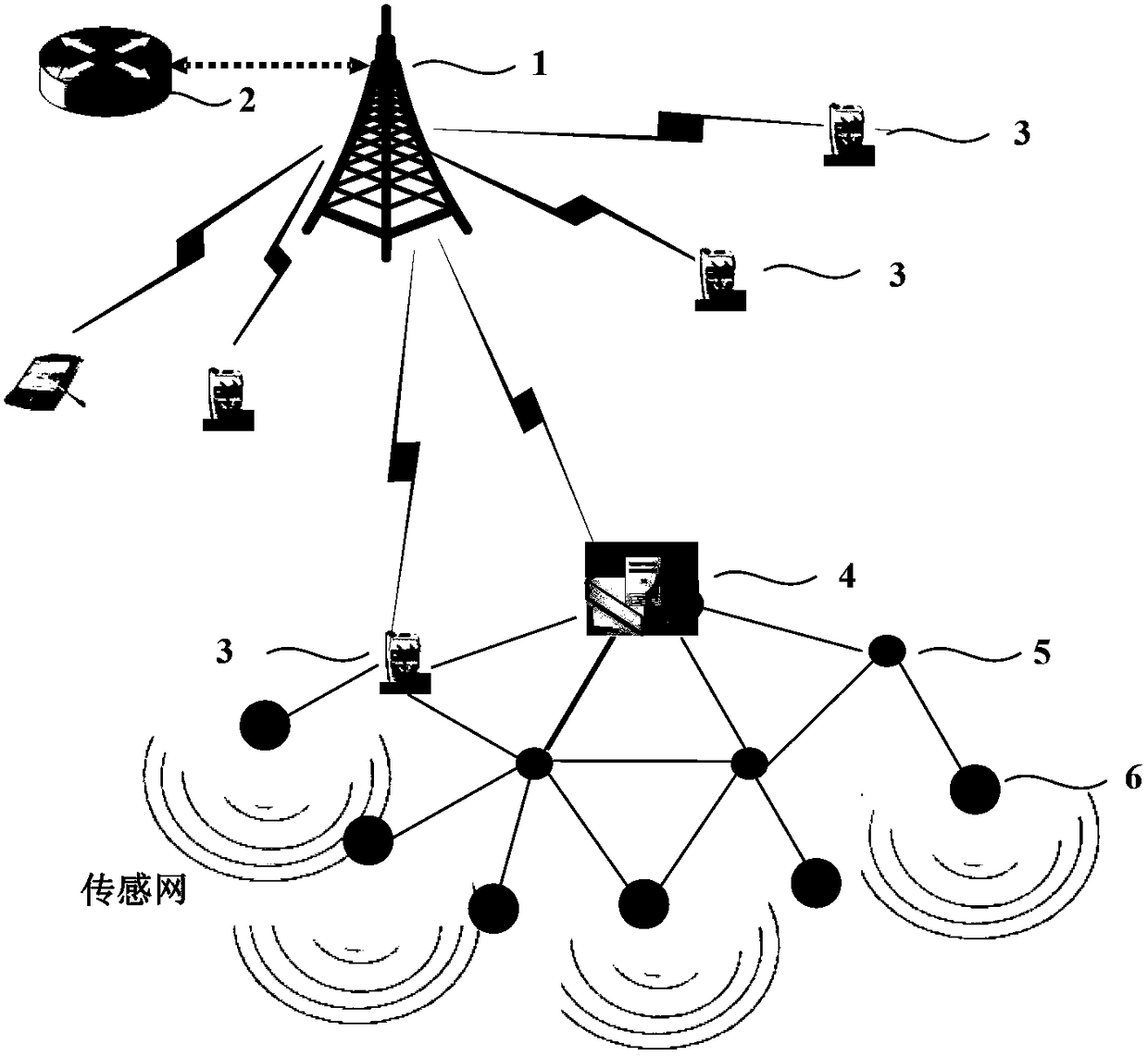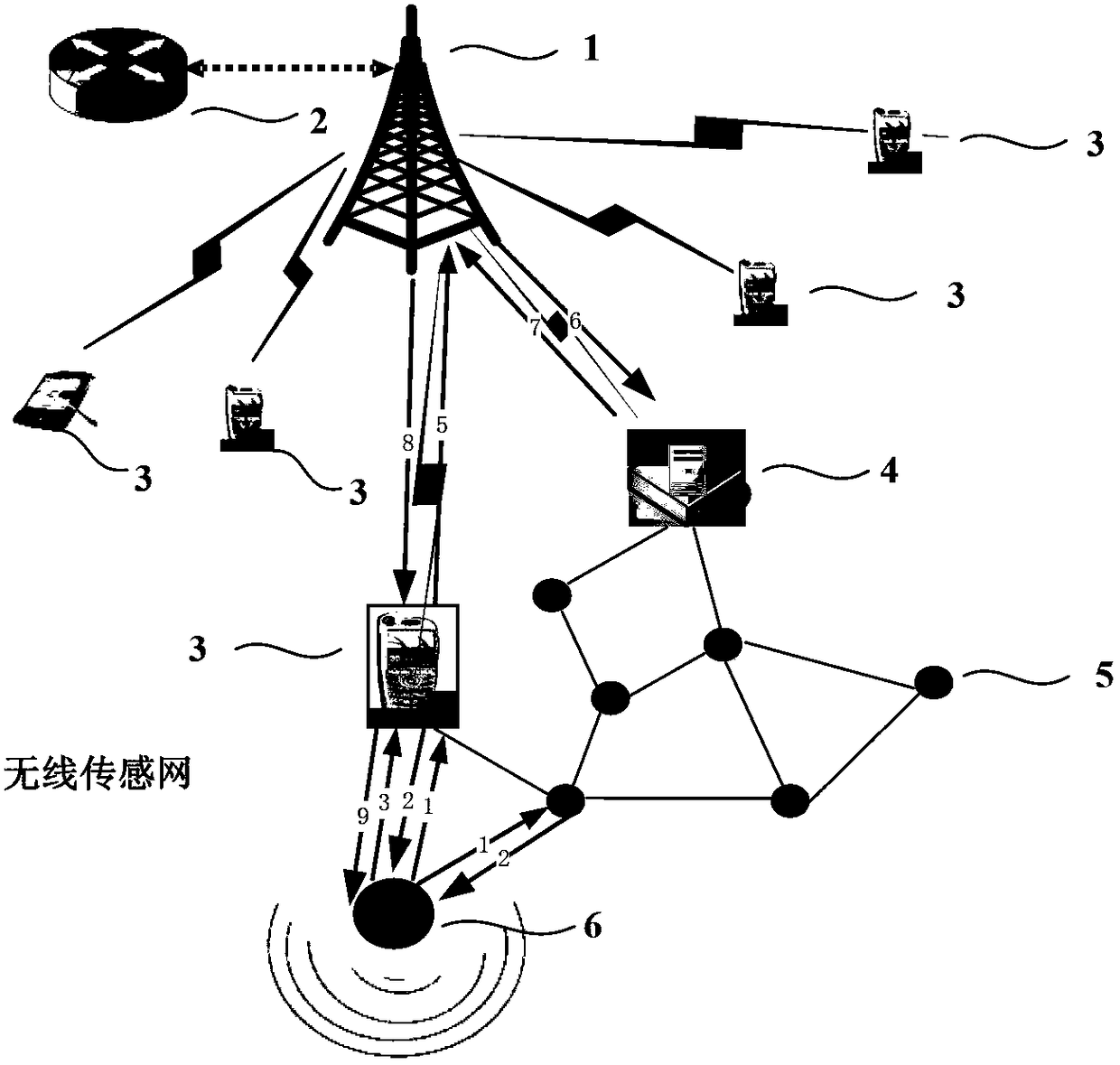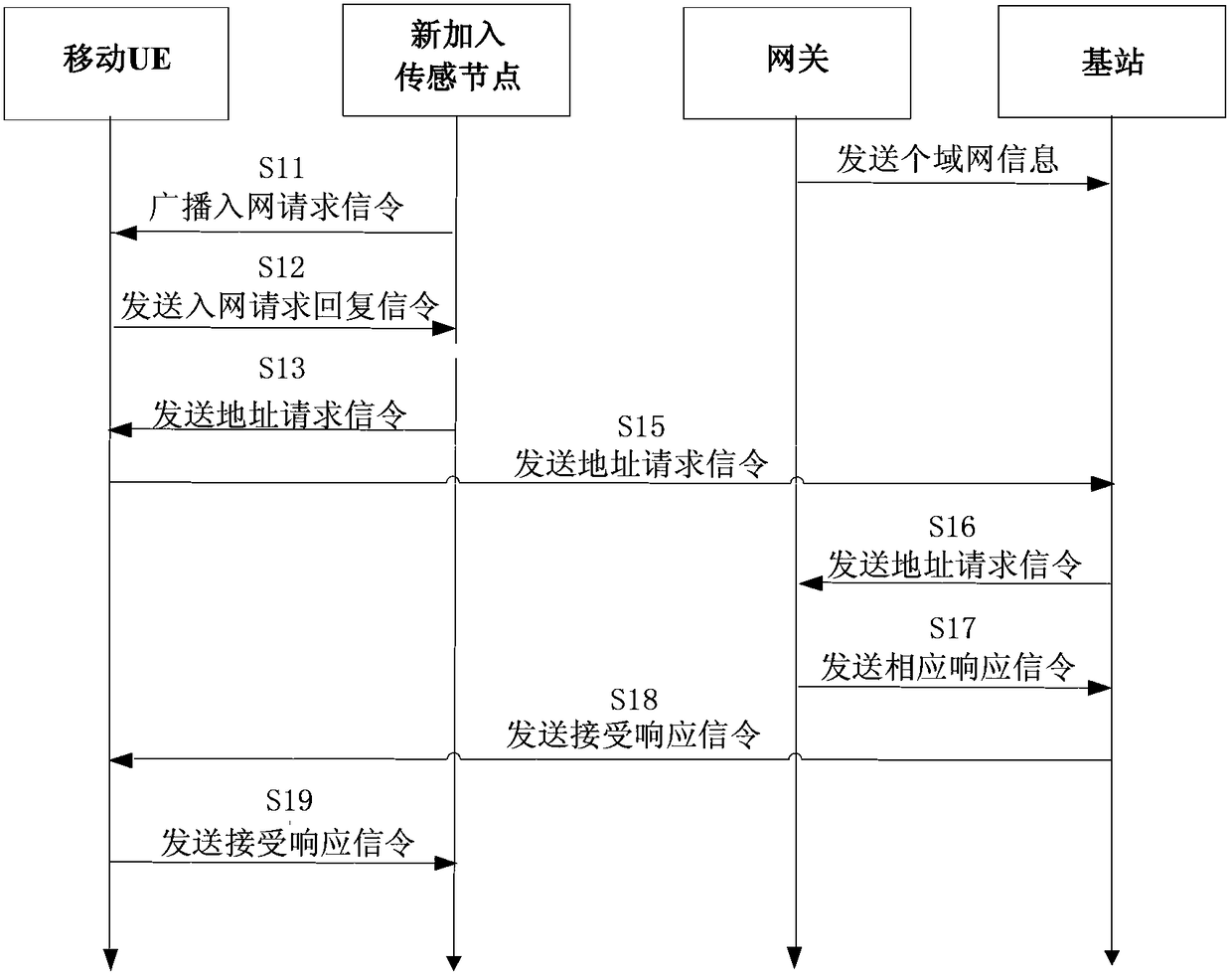An Address Assignment Method Based on Heterogeneous Mesh Network Convergence
A technology of mesh network and distribution method, which is applied in the direction of network topology, network data management, advanced technology, etc., can solve the problems of increasing the number of network access requests, consuming a large amount of energy and channel resources, increasing end-to-end, etc., and achieving reduction Energy consumption and signaling consumption, fast access to the network, and the effect of reducing network access delay
- Summary
- Abstract
- Description
- Claims
- Application Information
AI Technical Summary
Problems solved by technology
Method used
Image
Examples
Embodiment 1
[0061] This embodiment takes figure 1 The application scenario shown is taken as an example to specifically describe the non-D2D mode address allocation method based on heterogeneous mesh network fusion. figure 1 The application scenario shown includes base station 1, server 2, mobile terminal 3, gateway / coordinator 4, routing node 5 and newly added sensor node 6, such as figure 1 As shown, the small node represents the routing node 5, and the large node represents the newly added sensor node 6.
[0062] see figure 2 with image 3 , which are the application scenario schematic diagram and signaling flow chart of the non-D2D mode network access and address allocation method, respectively, figure 2 The application scenario shown includes server base station 1, base station server 2, mobile terminal 3, gateway / coordinator 4, routing node 5 and terminal newly added sensor node 6, where the small node represents the routing node 5, and the large node represents the newly added...
Embodiment 2
[0082] This embodiment provides an address allocation method based on the fusion of heterogeneous mesh networks. The method uses the UE to directly obtain the address from the gateway through the cellular network, that is, the UE and the gateway support the D2D mode, and the UE saves the gateway address information. see Figure 4 with Figure 5 , which are the application scenario schematic diagram and signaling flow chart of the D2D mode network access and address allocation method, respectively, Figure 4 The application scenario shown includes server base station 1, base station server 2, mobile terminal 3, gateway / coordinator 4, routing node 5 and terminal newly added sensor node 6, where the small node represents the routing node 5, and the large node represents the newly added sensor node 6. Sensor node 6, as shown in the figure, the steps of implementing the address allocation method based on heterogeneous mesh network fusion include:
[0083] S21, the newly added sen...
PUM
 Login to View More
Login to View More Abstract
Description
Claims
Application Information
 Login to View More
Login to View More - R&D
- Intellectual Property
- Life Sciences
- Materials
- Tech Scout
- Unparalleled Data Quality
- Higher Quality Content
- 60% Fewer Hallucinations
Browse by: Latest US Patents, China's latest patents, Technical Efficacy Thesaurus, Application Domain, Technology Topic, Popular Technical Reports.
© 2025 PatSnap. All rights reserved.Legal|Privacy policy|Modern Slavery Act Transparency Statement|Sitemap|About US| Contact US: help@patsnap.com



